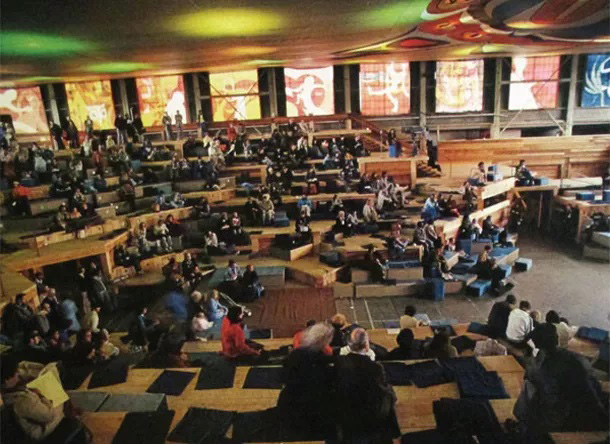The first time the United Nations held a global conference to showcase bright new thinking on housing was in 1976 — here in Vancouver. With its first host city facing its worst housing crisis ever, the UN is launching its third Habitat conference today in Quito, Ecuador.
Fifty thousand delegates have flown in from around the world to chart a vision for housing and sustainable development in the world’s cities. For Andrew Martin, it feels like the stars have aligned.
Martin is a master’s student at the University of British Columbia’s School of Community and Regional Planning — and one of 15 students from the school selected as part of Canada’s official delegation in Quito.
“The timing is incredible for us,” said Martin, who arrived in Quito a few days ago prepared, with some classmates, to present four posters in groups. His group is looking at the history of Canadian housing policy.
The long-ignored issue has been at the forefront of B.C. and Canadian headlines. Consultation on the first new national housing strategy in decades has begun under Trudeau's Liberal government.*
But the moment is unique beyond Vancouver and Canada. Habitat III faces a world urbanizing as never before.
Today more than half of humanity lives in cities, despite them occupying only two per cent of the globe, according to the UN. That half of the species and tiny fraction of land generates 70 per cent of the world’s GDP however, producing equal shares of its waste and greenhouse gas emissions. Cities also consume over 60 per cent of the world’s energy.
These numbers are only expected to increase. By 2050, the UN expects that over 70 per cent of the world’s population will be living in cities.
Conference organizers have drafted a collection of goals for delegates to consider in a document called the New Urban Agenda.
They call for national strategies to combat urban inequality “by enhancing livability, education, food security and nutrition, health and well-being,” and ensuring that cities are “planned, financed, developed, built, governed and managed [with a view to their] impact on sustainability and resilience beyond the urban boundaries.” A central theme is the idea of a “right to the city,” which prioritizes the needs of a city’s diverse residents over profit.
Habitat: Made in Vancouver
Lindsay Brown was 12 years old when Habitat came to Vancouver. It was a very different place in 1976.
“It was the last gasp of the idealism of the 1960s and ‘70s that was beginning to fade away,” said Brown. “It wasn’t that there was this naive hopefulness that we were going to solve all these problems, but there was this sense of mission and optimism that hadn’t been seen before.”
After school, she and a friend would visit the city’s Jericho Beach where old aircraft hangars hosted the conference’s non-governmental forum. Despite their youth they were welcomed onto the site, given hard hats, and allowed to pitch in sweeping sawdust and setting up seats.
Young people helping out wasn’t unusual at the event, said Brown, who’s also in Quito right now. Architect Bing Thom, who recently passed away, was behind a paper pavilion created by 2,000 school children in downtown Vancouver.

The era’s experimental optimism left Vancouver with a lasting landmark. False Creek South, where a dozen housing co-ops occupy former industrial land leased from the city, was born at the same time.
Against the “mythic” influence of Habitat ‘76 and its Vancouver Declaration, Brown can’t help but see Quito’s New Urban Agenda as a “watered down” version of its predecessor.
“The Vancouver Declaration was a brilliant document,” said Brown, who is working on a book about the Vancouver conference. “It had some very forward-looking, very bold recommendations about stemming property speculation. It had a very strong emphasis on rights — like the ‘right to the city’ — because the city makes you as a person: the right to land, the right not to be displaced, and that there should be public control of land.”
By contrast, Brown worries about the emphasis in Habitat III’s New Urban Agenda on partnerships with the private sector.
Martin shares her concern. “The Vancouver Declaration has much more language about what the government should do and what the government must do, rooted in values and drawing on a moral imperative to act,” he said. “That same language doesn’t appear in the New Urban Agenda, because states have contracted out a lot of those solutions.”
However, Penny Gurstein, the director of UBC’s School of Community and Regional Planning, is optimistic. Gurstein was a 25-year-old architecture student during Habitat I, and she’s happy that NGOs had a larger role in crafting the proposed outcome document this time around.
“It’s not as top-down, and there’s a much larger role for cities,” she said.
Considering the growth of the world’s urban population, urbanists have argued for a larger role for mayors and cities in national, and even global, governance.
Urban action
Gurstein is also optimistic about the future of housing in Canada. Prime Minister Trudeau’s Liberal government is showing much more interest in housing than did Harper’s Conservatives.
That showed, she said, in how easily her SCARP students were accepted as Canadian delegates in Quito.
“It was basically me telling [the Ministry of Families, Children and Social Development] that we were going, and they said we could become delegates,” said Gurstein. “The Canadian government seems to be wanting to engage internationally.”
Before the end of the year, the federal government is expected to release its findings from CMHC-led consultations held in support of a national housing strategy.*
Will lessons from Quito turn up in Canada’s next national housing strategy? Or other attending nations’ strategies?
Critics have noted that it’s hard to know how to measure cities’ achievement of sustainable development goals. The New Urban Agenda is a statement of aspirations for nations that sign it, not a binding agreement. Many cities lack data about their own development; others have different local goals than their national governments.
Regardless, Lindsay Brown is hopeful.
“Governments like to ignore declarations, said Brown. “We’ve signed on to many in Canada and we break our commitments daily. But what these declarations do is they allow people in the field and activists and organizers to point to them and say: ‘We signed on to this. Let’s start honouring it.’”
* Story corrected Oct. 18, 2016 at 3:00 p.m. ![]()
Read more: Federal Politics, Housing
















Tyee Commenting Guidelines
Comments that violate guidelines risk being deleted, and violations may result in a temporary or permanent user ban. Maintain the spirit of good conversation to stay in the discussion.
*Please note The Tyee is not a forum for spreading misinformation about COVID-19, denying its existence or minimizing its risk to public health.
Do:
Do not: